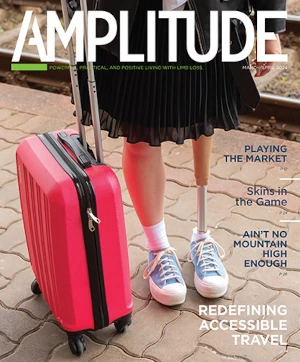An open-access case study, published January 3 in the Journal of NeuroEngineering and Rehabilitation, addressed the prosthetic needs of a forensic pathologist who has a unilateral transradial amputation. The case study participant and first author, Wolf Schweitzer, MD, noted that forensic medicine is a physically demanding work environment even for people without disabilities; therefore, a prosthesis user requires “sufficiently precise workplace specifications and sufficiently hard testing of prosthetic devices.” The results of the five-year study indicate that the body-powered prosthesis offered better grip reliability, grip force regulation, grip performance, center of balance, component wear down, sweat/temperature independence, and skin state than a myoelectric hand.
Schweitzer conducted a direct comparison of the myoelectric i-limb Revolution (Touch Bionics by Össur, Livingston, Scotland), and a customized body-powered arm that included a quick-lock steel wrist unit; cable mount modification; cast shape-modeled shoulder anchor; and suspension with a soft double layer liner (WillowWood, Mt. Sterling, Ohio), and tube gauze combination (Mölnlycke Health Care, Gothenburg, Sweden). The i-limb Revolution was mounted on an epoxy socket; a lanyard fixed liner (WillowWood) contained magnetic electrodes (Liberating Technologies, Holliston, Massachusetts). The five-year testing of each prosthesis included troubleshooting and problem resolution and was supplemented with 12-14 hours per day of “dedicated and focused” two-week tests on the job.
The results of the testing indicated that the customized body-powered arm was reliable, comfortable, effective, powerful, and required minimal maintenance. Most notably, grip reliability, grip force regulation, grip performance, center of balance, component wear down, sweat/temperature independence, and skin state were good. Posture and sweat interference for the myoelectric device and grip geometry issues led to failure of static holding requirements.
The myoelectric prosthesis suffered electrode malfunction and caused skin injury in sweaty situations, which is a typical condition in forensic pathology. Weak grip force was not always problematic, but it could be improved by using grip-surface enhanced work gloves such as nitrile covered textiles; warranty restrictions prevented using this as a viable option, according to the study. Physical and chemical exposure were a threat to the function of the myoelectric hand.
The authors suggest that research and development of prostheses address body-powered technology for manually demanding jobs rather than focusing on perfecting anthropomorphic appearance.



